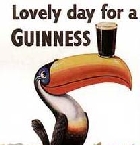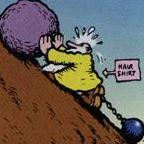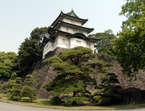Joel Billings
Posts: 32265
Joined: 9/20/2000
From: Santa Rosa, CA
Status: offline

|
A UV 2.30 patch is now being tested by the Matrix UV beta testers. Our goal is to release the patch to the public by the end of the month. Of course, it is quite possible that problems with the patch that are found during testing may postpone the release to the public. We are doing our best to get this patch out as soon as we can, and as soon as we feel comfortable that we haven't caused additional problems.
Joel
Here is a list of the items addressed in the patch now in test:
1) All non-assault point units get 1/10 of an assault point each when on defense only during odds calculations (each support squad, engineer squad, gun element, etc.).
2) We have greatly improved the coordination of naval air attacks that target TFs located in a base hex.
3) We may have eliminated the bug that caused very rare attacks to be launched to hex 0,0.
4) Submarines may now intercept and attack TFs that move through their hex during execution (in the past the TF had to end its turn in a sub’s hex for an attack to be possible). The basic chance of a sub sighting an enemy ship in its hex used to be 33%. Many factors go into determining if an attack is made, and if so, how successful the attack is. These have all remained the same. However, the basic chance of a sub sighting an enemy ship that moves through a sub’s hex (instead of just ending in the sub’s hex) has been reduced to 20% during daytime and 10% at night.
5) Having multiple friendly submarines in the same hex now causes certain disadvantages for the submarines (the time of UV is mostly pre-wolfpack tactics). There will be an enhanced chance of aircraft flying search to find and hit a submarine in the hex. Also, once one submarine locates and attempts to attack a target in the hex, no other submarines will be given an opportunity to locate and attack a target at that moment.
6) Exiting the game should now do a better job of freeing up system memory. Repeated exiting and entering the game should no longer lead to the eventual lock up of the computer.
7) All pilots making a strafing run must now pass an experience test with the chance of passing equal to their experience. If the pilot fails the test, that aircraft will automatically miss hitting anything during the strafing run. At night, the chance of passing this experience test is reduced by 75%.
8) Flak against aircraft bombing at night is no longer quartered if the attack is carried out under 500 feet (strafing and skip bombing).
9) Target selection of specific ground units during ground attack air missions should be improved. The number of men killed by air attack has been reduced somewhat.
10) Nightfighters with radar will have a slightly better chance of intercepting enemy night bombers than in previous versions.
11) We have lowered level bomber accuracy against TFs, especially for pilots with less than 70 experience against ships travelling at high speed. The impact of pilot quality and ship speed on level bomber accuracy against TFs has been enhanced. Even strong level bomber pilots against very slow targets will have less chance to hit than before. This level bomber adjustment does not impact level bombers using torpedoes.
12) Enemy ships at anchor in a port can now be detected by recon missions. The roll-over text on an enemy anchor symbol on the map will now give an estimate of the number of ships in port and estimated reports on up to 10 specific types. The accuracy of the estimate is effected by the detection level of the base.
13) Under some circumstances planes with sweep missions would attack enemy TFs. This should not have been happening and has been corrected.
14) Radar equipment in ground units will not be damaged or destroyed due to fatigue alone. This was done due to the difficulty of getting these units replaced under the current system and due to our desire not to allow malaria to knock these systems out of action.
15) HQ units were not receiving replacements. This has been fixed so they now receive replacements in the same way as any land unit.
16) Ships must now be in Noumea, Brisbane or Truk (either at anchor or in the hex in a TF) to upgrade the aircraft on the ship.
17) Carrier air unit operations are now halved when in a base hex. This simulates their inability to operate near land. The impact should be that for carriers in a base hex only half as many planes will fly as would otherwise have flown had the carrier been in a non base hex.
18) Partial air groups will not upgrade their aircraft if their parent unit has not upgraded its aircraft.
19) Incidents of naval air attacks facing friendly CAP and attacking friendly ships should be greatly reduced (if not eliminated).
20) Air units will try to do a better job picking TF targets such that they don’t fly into devastating CAP without sufficient escort, especially if there are easier targets to attack. Two exceptions to this are 1) bombers with durabilities over 54 do not require escorts and 2)Air Combat TFs will attack enemy Air Combat TFs even if the Escort to CAP ratio is poor.
21) Air combat with big groups of planes, particularly those with high fatigue led to bloodbaths (40-60% losses per side) in version 2.20. An attempt has been made to tone this down, without impacting smaller air battles too much.
22) Operational losses are now doubled at night.
23) The bug where partial air units disappear from the Long Island and other carriers has been fixed. Also, partial air units should no longer automatically return to a badly damaged carrier that they could not land on.
24) The weather system has been changed somewhat. Now, the only time a weather scrub message will appear is when an air unit with a specified target location is unable to attack its target due to bad weather. Now, every hex with a unit or base will have a weather value, and if it is bad enough no strike missions will fly into or out of the hex. A graphic (a circle with plane in the middle and a line through it) will be displayed in the hex of any unit or base (except bases with only a beach with no supplies or fuel) with a detection level of at least 1 during the execution to reflect this bad weather. The weather is set separately in the night, AM and PM sub-phases so the graphic will change during the resolution phase. Weather that is not sufficient to shut down strike missions from a hex still factors into many combat calculations as before.
25) Ships out of fuel cannot launch aircraft.
26) It should no longer be possible for a player in a PBEM game to reload a save and create a different execution phase result. The execution phase should always resolve the same way.
27) We may have fixed the problem with combat replays during PBEM games not matching if run on different machines. If not entirely fixed, the chance of an inaccurate replay should be very low.
28) The game now automatically accounts for 24 and 32 bit color mode (it automatically temporarily switches to 16 bit while in the game). Players will need to run the exe with a –w modifier when using certain monitors with text problems. When using the –w mode, do not resize your window as the program is not set up to work with different sized windows. You are strongly advised to use a screen resolution that is larger than the game resolution you are playing in (for example, if the game is set for 1024x768 be sure to have a screen resolution larger than this, say 1152x864). When playing in the –w mode, move the mouse to the extreme edges of your screen to scroll the map.
29) Clarification – Fighter sweeps only drop down to strafe an enemy base if set to 100 feet altitude
30) Clarification - The Arrive at Night function used by TFs acts like the Sprint Away from DH function in that TFs will only do it if the DH is an enemy base or a friendly base that is considered in dangerous territory (currently the manual only lists this for the Sprint Away function).
|
 Printable Version
Printable Version
























 New Messages
New Messages No New Messages
No New Messages Hot Topic w/ New Messages
Hot Topic w/ New Messages Hot Topic w/o New Messages
Hot Topic w/o New Messages Locked w/ New Messages
Locked w/ New Messages Locked w/o New Messages
Locked w/o New Messages Post New Thread
Post New Thread